A sound is a form of energy that travels through the air, in a form of vibration of air particles. A sound is also a basic form of communication used by humans and animals. Sound can be produced by musical instruments, human vocal cords, as well as natural phenomena such as thunder.
Sound measurements provide a way to objectively compare and analyze different sounds. Sound measurements can be used for improving the acoustics of buildings or developing better loudspeakers. In the case of noise, measurements can help to identify noise sources.
Humans perceive sound through their sense of hearing. The ear converts sound waves into electrical signals that are then transmitted to the brain, where they are interpreted as sounds.
Sound pressure levels (SPL) are typically expressed in decibels (dB). This is because the human ear perceives sound intensity logarithmically rather than linearly.
Decibels are units of sound pressure levels (SPL) while Hertz (Hz) denotes the sound frequency. The dB scale is logarithmic and uses the hearing threshold of 20 µPa as the reference level.
The decibel (dB) is a logarithmic unit used to measure sound level. The noise decibel is a ratio between a quantity that has been measured and a reference level of the 20 micro Pascals. The 20 uPa is a hearing threshold and on the noise scale, it is marked as 0 dB.
Sounds that are unpleasant or unwanted are called noise. It can be caused by a variety of sources, including machines, traffic, and construction. Noise pollution is a serious problem that can lead to hearing loss, anxiety, and other health problems. For example, noise in schools may have detrimental effects on kids’ learning, productivity, or ability to focus.
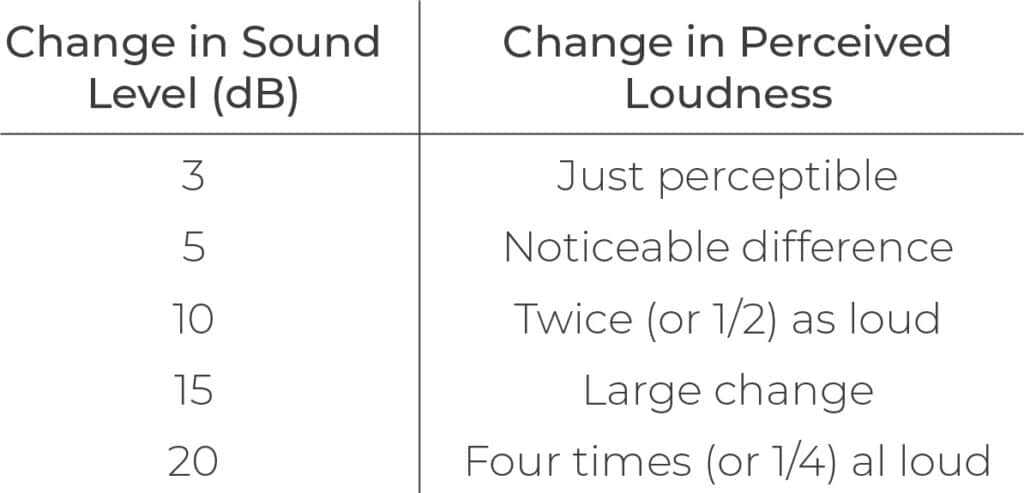
The range of frequencies a healthy human can hear is between 20 Hz and 20 kHz. In decibels, the threshold of hearing is 0 dB, and the threshold of pain is about 130 dB. An increase of about 10 dB is required before the sound subjectively appears to be twice as loud.
The frequency of a sound is the number of pressure variations per second. This is measured in hertz (Hz). The frequency of a sound produces its distinctive tone. Thus, the rumble of distant thunder has a low frequency, while a whistle has a high frequency.
Loudness in acoustics is the individual’s interpretation of sound pressure. It is described in more formal terms as “That attribute of auditory sensation in terms of which sounds can be ordered on a scale extending from quiet to loud”. The subjective or perceived loudness of a sound is determined by several factors, including the intensity of the sound, the frequency of the sound, and the duration of the sound.
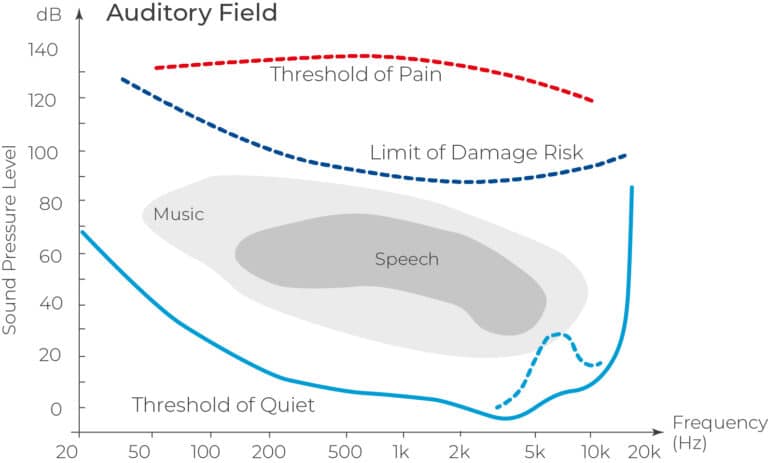
Frequency can also be used to describe the wavelength of a sound. The wavelength is the distance between two similar points on a wave. The higher the frequency, the shorter the wavelength. For example, a sound with a frequency of 20,000 Hz has a wavelength of 1.7 cm. A sound with a frequency of 200 Hz has a wavelength of 17 cm.
A sound level meter is a device used to measure sound pressure levels. Sound level meters use a microphone, a preamplifier, and a signal processor to transform sound into a digital result presented in decibels on the display.
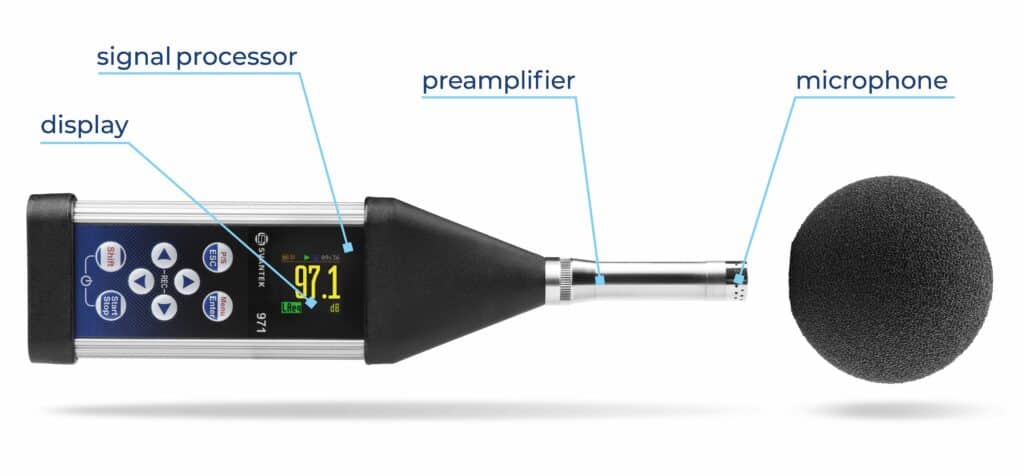
SVANTEK SV 971A – Class 1 Sound Level Meter

SVANTEK SV 104A – Noise Dosimeter
A noise dosimeter is a small sound level meter that is attached to the worker’s clothes near the more exposed ear. The goal of taking a measurement with a noise dosimeter is to evaluate the noise exposure of employees throughout the working day.
Sound measurement methods depending on the type of noise source being measured. International standards such as ISO or OSHA provide clear guidance on how to conduct measurements with sound level meters and noise level meters.
For example, the ISO 9612 in Europe and OSHA 1910.95 describe procedures of measurement of noise at work. Procedures of environmental noise measurements are described in ISO 1996.
Operator's presence
When measuring sound with a sound level meter it is important to avoid interfering with the measurement. The operator’s presence can block the sound coming from a given direction, causing reflections that may result in measurement errors. To minimize the influence of the operator’s presence sound level meters are often used on a tripod or in an outstretched hand.
Background Noise
Background noise is a level of sound without a contribution of sound generated by a source of interest. Examples of background noise can be traffic noise, power supply, or noise produced by wind. Measurement standards provide a minimum margin from background noise for noise emission measurements to be valid.
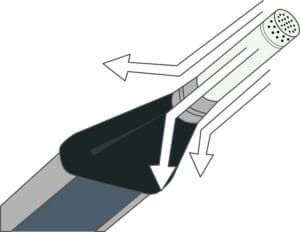
Sound propagation
When the distance is doubled, the amplitude of sound in the air decreases by half, or by 6 dB. In other words, if you are one meter from the source and move one meter away, the sound pressure level will decrease by 6 dB. This is only accurate, though, when there aren’t any reflecting or blocking materials in the way of the sound. Such ideal conditions are termed “free-field conditions.”
In the presence of an obstacle, some of the sounds will be reflected, some will be absorbed, and the remaining portion will be transmitted through the object. Depending on the object’s characteristics, its size, and the sound’s wavelength, different amounts of sound are reflected, absorbed, or transmitted.
Wind and dust
Sound level meters use a windscreen to protect the microphone from dust and weather interference. Windscreens are typically made of porous sponge material, which helps to reduce unwanted noise. The windscreen should be regularly checked for dirt and cleaned as needed to maintain optimal sound quality.
Humidity
The relative humidity levels can have an effect on the sound level meter and microphone. Especially if relative humidity levels are higher than 90% may have a significant impact. In such cases, sound level meters are placed in waterproof housings to avoid interference from potential sources of moisture.
Temperature
Class 1 sound level meters are designed to operate over a range of temperatures from –10 to 50°C and class 2 from 0 to 40°C. Moreover, sudden temperature changes can cause water condensation on a microphone.
Sound level meters use weighting filters. The most popular frequency weighting is “A-weighting,” whose shape reflects the response of the human ear. The top of the A curve indicates frequencies to which the ear is the most sensitive.
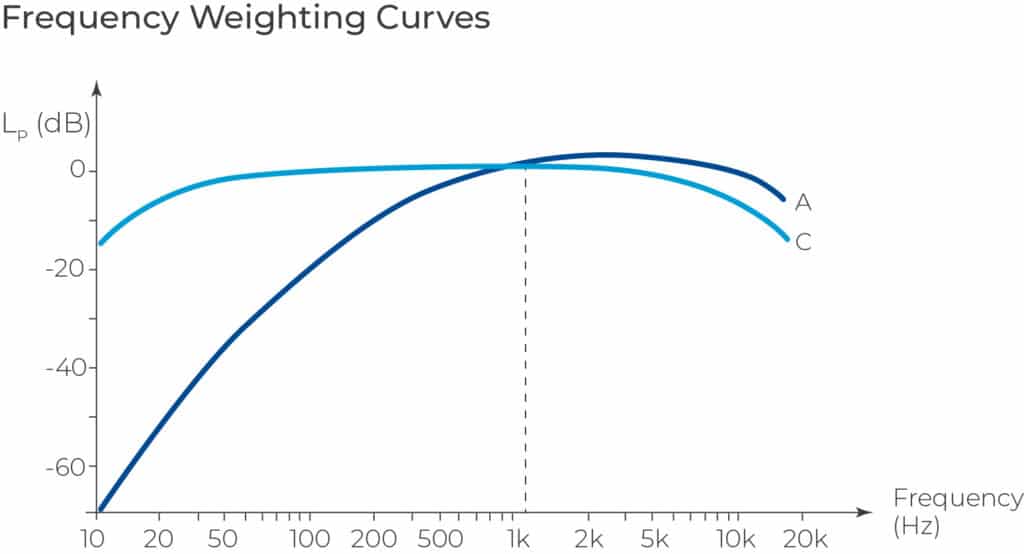
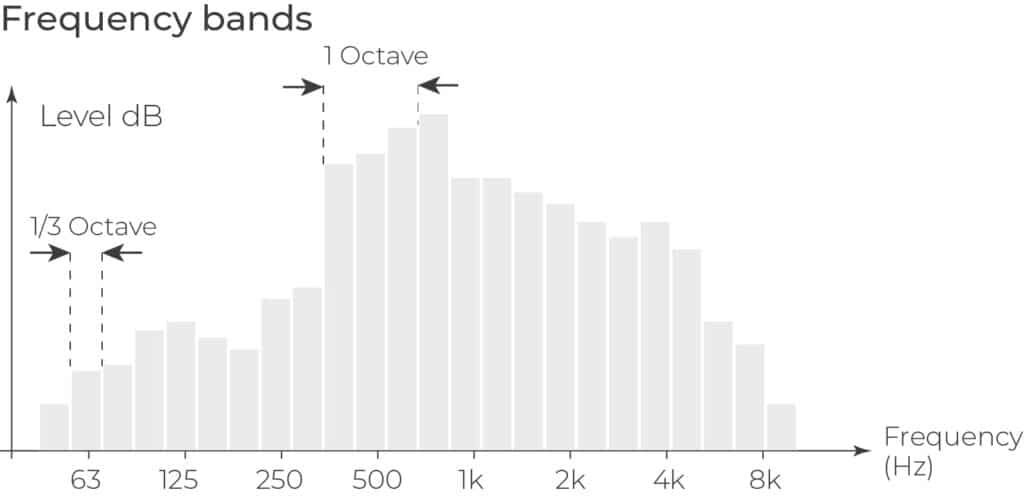
Sound level meters use frequency filtering to analyze the impact of frequency components on the total signal. Examples of frequency bands are 1/1 octave frequency bands where the highest frequency is twice the lowest frequency.